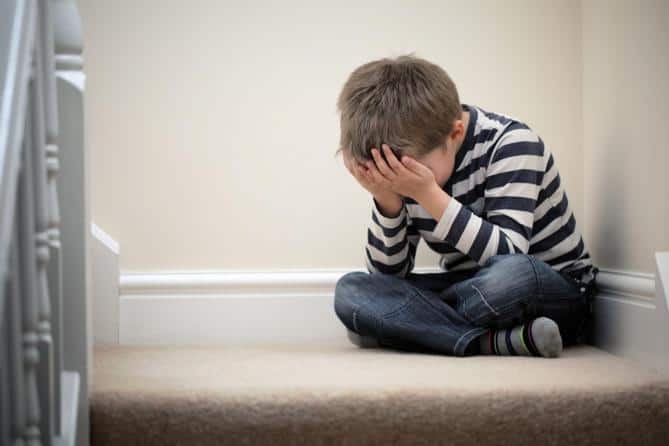Bullying in Schools
Earlier this week I was interviewed on The AM show about bullying in New Zealand schools. The topic is huge and has widespread implications for not just our tamariki, but our family wellbeing and the culture of our schools. It’s a big topic and 3 minutes barely scratches the surface, so I have written a blog to expand on the topics we touched on during the interview.
If you would like, you can watch the interview here:-https://www.newshub.co.nz/home/shows/2018/04/is-your-child-being-bullied.html
In 2017 the Organisation for Economic Co-operation and Development – or the OECD – published a report on student well being. The report highlighted that New Zealand has the second highest rate of student reports of bullying across the 34 countries that took part.
This rate was 26.1 %, meaning over a quarter of our children will experience some degree of physical or psychological bullying during their school years. The OECD average was 18.7%. It is still alarmingly high, but nearly 10% lower than the New Zealand figure. Other first world countries including Canada, the US, Australia and the UK all have lower levels of reported bullying.
This is not just problematic for the person being bullied. Bullying has profound consequences for everybody involved; those who are perpetrators, those who are bullied and those who witness it. Given the current figures, there will be no child in New Zealand who hasn’t been exposed to some element of bullying during their schooling.
So, what is bullying?
Bullying can take on many forms and common examples of bullying include:
- Being made fun of
- Being left out of activities or experiences
- Having nasty rumours spread about a child
- Being hit or pushed
- Cyberbullying
Ultimately, the act of bullying is a use of power or dominance against another. As I mentioned on the AM show, it is a normal part of child development to experiment with power and dominance, however it can sometimes go a bit wrong and a line can be crossed. There is a line between banter and bullying.
Bullying also involves a repetition of the behaviour including threats of repetition that are designed to coerce, dominate or intimidate through fear.
Bullying targets our biggest need as a human, social connection. The impact of bullying damages our self-esteem and stops us from us from reaching our true potential by making us feel worthless and ashamed.
So, why do people bully?
To begin to tackle the issue of bullying it can be helpful to ask why people bully in the first place. Understanding the different circumstances that lead to bullying can help us to create a wide range of strategies to combat it within a school environment.
There are several key reasons that might cause a child to bully another child;
- The culture of the school doesn’t focus enough on wellbeing – humans habituate to the environment they are in. If the school culture isn’t consciously celebrating diversity or promoting acceptance of a range of views, it can be easily to target kids who fall outside of this accepted norm. There is so much research from the field of social psychology that shows humans tend to follow the set culture (you can google Milgram or Asch or Zimbardo if you are interested).
- All children go through normal developmental stages where they experiment with control and dominance. When a child bullies another child, it can be that this stage has become misguided. Gentle guidance away from hurtful language or descriptions of others before the repetitive nature of bullying can be established can help stop this developmental stage becoming habitual.
- Sometimes bullying is itself a preventative measure. A child may have been bullied or have seen bullying and are worried about being bullied themselves; For instance, “if I become the bully I’ll be safe from bullying”
- Children who display bullying behaviour are more likely to have experienced stress or trauma.
- As we have seen with school culture impacting bullying behaviour, home environments have a significant impact, too. Children who bully have often not been modelled kind, respectful and accepting behaviour at home.
So, what can we do in schools?
The adage “an ounce of prevention is worth a pound of cure” is particularly apt for the issue of bullying. A culture shift needs to happen. What we can glean from the OECD report on bullying is that countries that scored the lowest – such as the Netherlands with a figure of 9.3% – also tended to have a greater focus on wellbeing and belonging in schools.
One place we can start to impact our national bullying rate is to look at the culture of our schools. Schools that actively value and model inclusivity, belonging and student wellbeing alongside academics and sporting achievements tend to have lower levels of bullying.
If you are unsure about the culture of your child’s school, ask to see their anti-bullying policy and their wellbeing policy. If you are unhappy with how your school appears to deal with bullying, offer feedback and suggestions to help cultivate a proactive relationship between the school, families and pupils. Chances are if you’re unhappy there will be other families in a similar boat. Often it’s just starting the conversation that is needed.
If you are happy with your schools anti-bullying policy, reinforce the same rules and values at home.
So, What can we do as parents?
I don’t think there is a parent in New Zealand who isn’t worried about bullying. It’s hard enough supporting children with their academic, sporting and social activities without adding the worry of friendship connections and the corrosive threat of bullying. As I have stated, the best approach to bullying is to take preventative measures with your children, rather than waiting until they are involved in bullying.
- Start by having an open conversation with your children about respect and kindness. Reinforce family and school values that differences should be met with tolerance and an open mind. We need to go then further than just talking about it. We need to model it to our kids as well.
- Teach children self-advocacy skills such as scripts to say if they feel someone has been unkind to them. Such as ‘I don’t like that’, ‘that wasn’t very kind’ or ‘back off’. You can also teach them several options to use when they are in a situation where they feel threatened. They could use their script, they can walk away, and they can tell a person they trust.
- Finding and cultivating a relationship of trust with a key person in school is important. When your child feels comfortable and safe with someone, they can go to them if they see or are the target of bullying. One powerful strategy that also goes a long way in changing the culture of a school is to teach your child to be an upstander instead of a bystander, which is how to intervene safely when they see a bullying incident. An example of this strategy is a school in Melbourne where pupils were supported to call out incidents of racist or homophobic language. In this case, bullying decreased dramatically. It simply wasn’t tolerated within the culture of the school.
- Teach your child to look out for targets of bullying or situations where bullying could occur. If a child is sitting on their own, teach your child to befriend them or invite them to play with their group of friends. You can introduce them to this idea by showing them www.sitwithus.io a mobile app which helps connect ‘sit with us’ ambassadors in schools with children who are on their own.
- Bullying can follow a child home from school because of the internet and social media. Foster an open device use policy at home and connect with your kids about what is OK and when and how to share when they feel uncomfortable.
It is really important to not label a child with either the word bully or victim. It is far more effective to talk about the behaviour not the person. If a child is labelled as something, this then becomes part of who they are rather than what they do and becomes more fixed and more difficult to change. Sometimes the the only difference between bullying or being bullied is a matter of circumstances.
What if your child tells you they are being a target of bullying?
This can be every parent’s worst nightmare, however it’s important to stay calm and reassure your child they have done the right thing by talking with you.
- Try not to get involved in any retaliation, instead report the suspected bullying to the school who should treat your concerns seriously while offering support to all parties involved.
- Your school should communicate with you, stating the incident will be investigated and reassure you that you will get a response once more details are known. Going through the school channel allows you to effectively advocate for your child and involve the police if it’s appropriate.
- If you raise concerns with your child’s school and these steps aren’t taken you can contact the Ministry of Education or the Office of the Children’s Commissioner.
How do you know if your child is being bullied?
Some children may not report that they are being bullied. If you are worried your child is being bullied, signs to look out for include:
- changes in temperament – especially angry outbursts
- being anxious or nervous about going to school
- saying they have no friends to play with
- if they’ve become more withdrawn or submissive
- if they have unexplained bruises
What if it is your child is bullying another child?
As I have mentioned, there are also serious implications for those doing the bullying. If your child is bullying another child they will also need a huge amount of love and support.
- It’s important not to overreact. If you shame or berate your child too much about their behaviour they will start to identify as the victim and not be able to hold empathy for the person they hurt.
- You should seek help from the school to address the issue. It’s vital to face the issue proactively. It helps to model to your child/ren that this is unacceptable in your family, but you will help them to make amends.
- If you can, approach the other child’s parents. If appropriate, arrange a play date that is attended by a parent of each family so you can model expectations, allow the children to learn about each other positively and let them know that you talk to each other!
- Emphasise and model fair treatment of others and remind your child when they have also done so in the past, so they can connect with these skills.
- Help to develop their emotional skills and look at building up empathy for the person they are targeting. A key exercise could be to try and get your child to explain how they might feel if roles were reversed. Helping them to write a letter of apology also helps to build empathy and remorse.
- Teach your child appropriate social skills – children experiment with dominance and power as part of their normal development. If you can see this is going too far then teach them more appropriate ways to feel powerful by giving them roles of responsibility.
- Have consequences in place – ones that are logical to the behaviour are best – Apologising, making amends and ultimately a loss of social privileges (or device). For example, “if you can’t show respectful behaviours to others then you can’t be around others”.
- Lastly, restorative rather than punitive approaches to discipline are far more effective at correcting socially negative behaviour. These should focus on repairing harm to the other person while acting as an opportunity for reflection and education rather than punishment.
Further information:
Remember, it is a difficult issue to navigate with children and as a parent it’s easy to feel out of our depth, or to let our own emotions or concerns impede the process. To help, I’ve listed some excellent resources to help you:-
General:
- Cyberbullying.co.nz
- Netsafe
- Bullyingfreenz
- Education.govt.nz website
Educators:
- NZIWR.co.nz (The New Zealand Institute of Wellbeing and Resilience)
- The Kia Kaha program through the police
Individual support:
- Kidzline.org.nz
- Psychological support from a registered and experienced psychologist who can work with your child, the family and the school
If you have any concerns or queries, you can contact me at: emma@thechildpsychologyservice.co.nz



